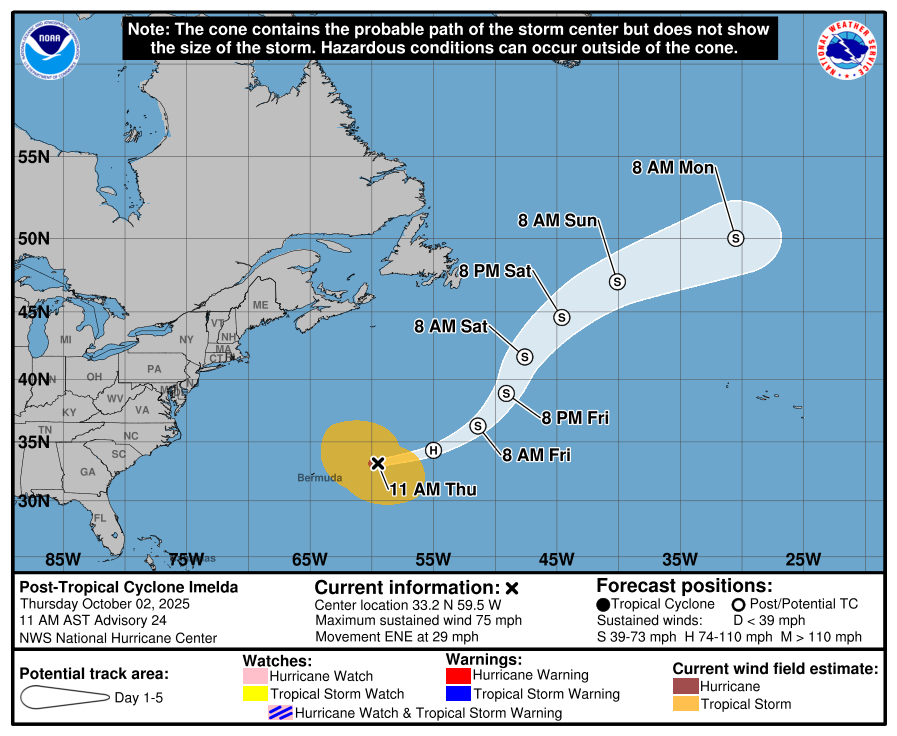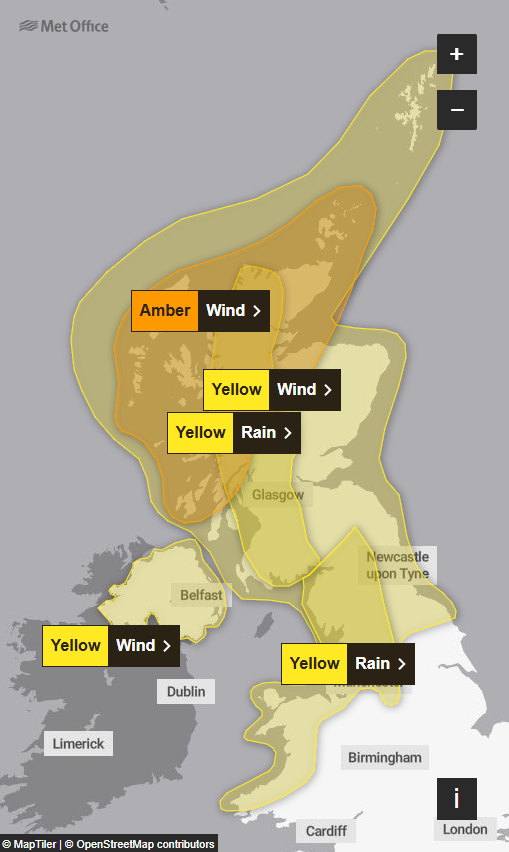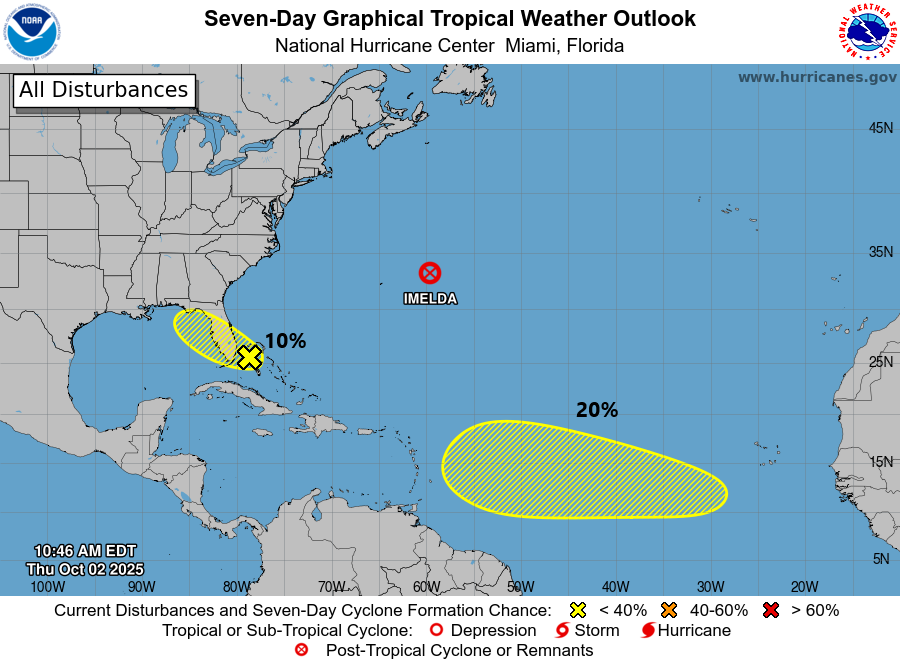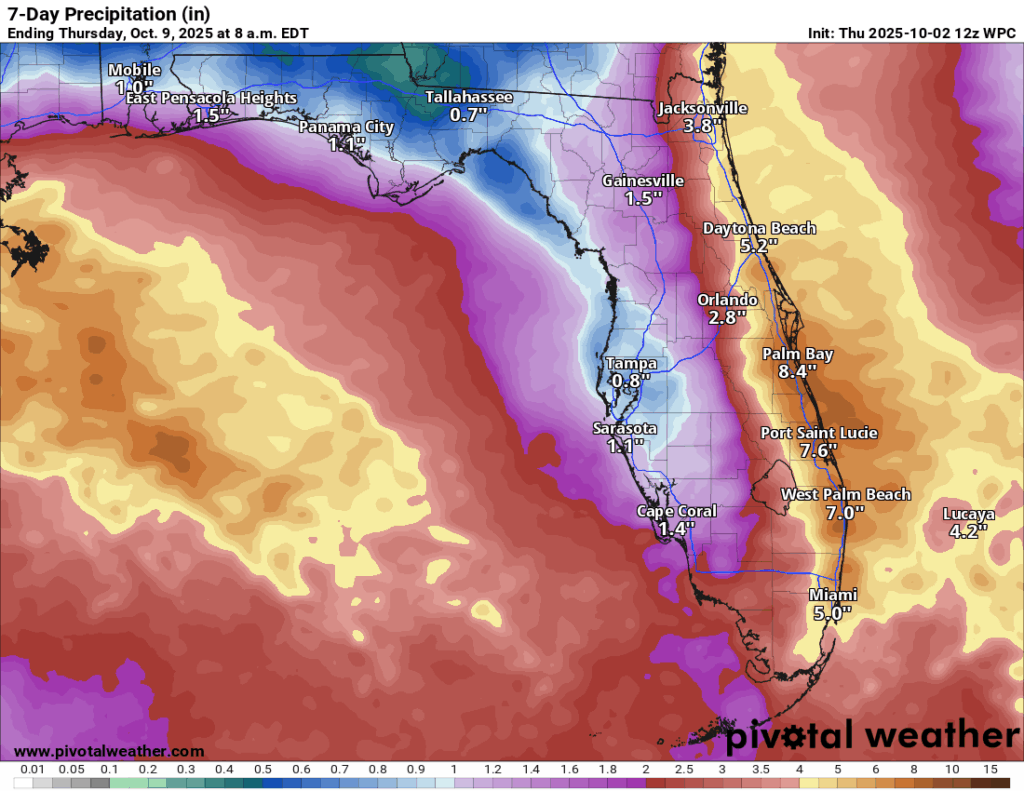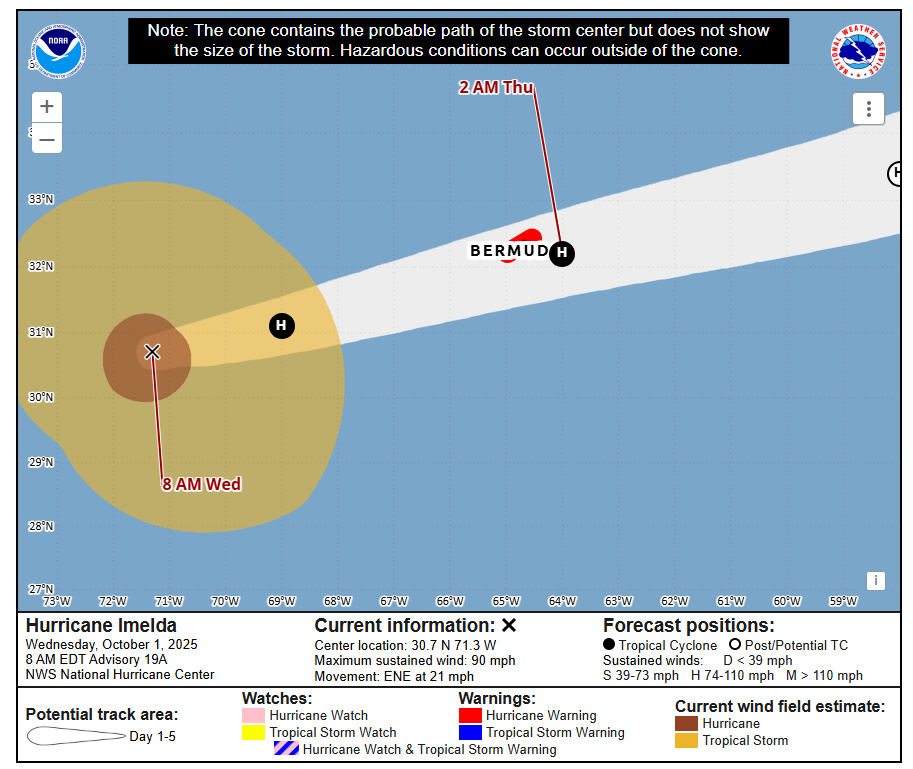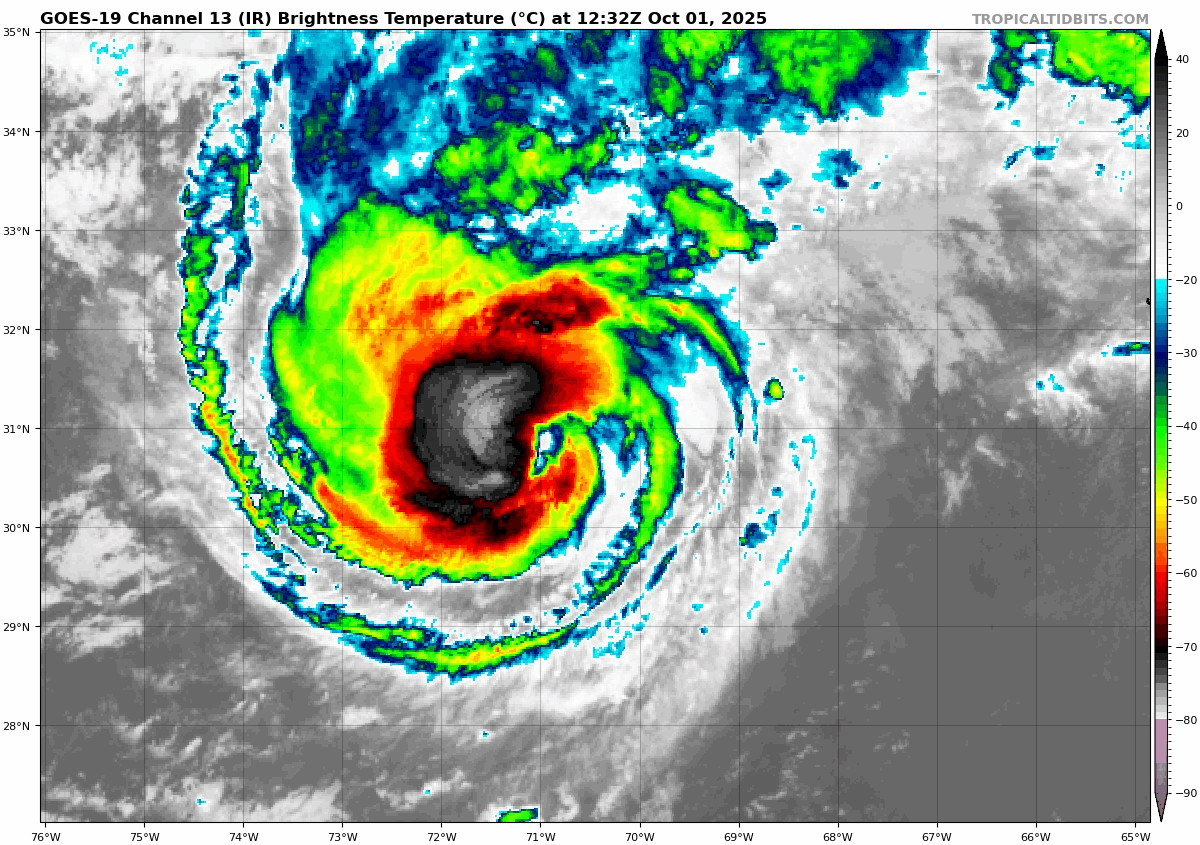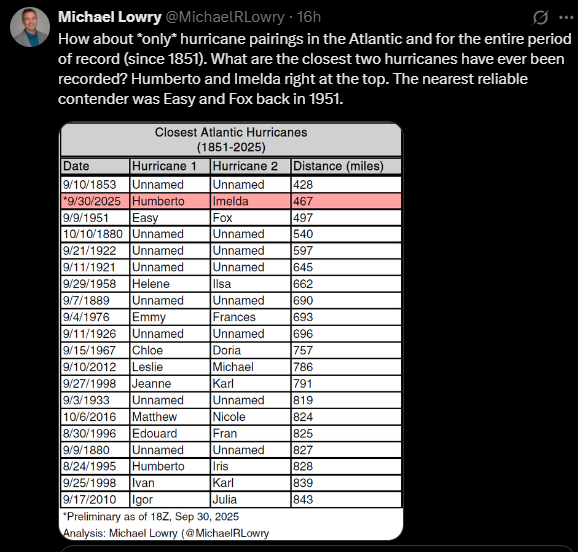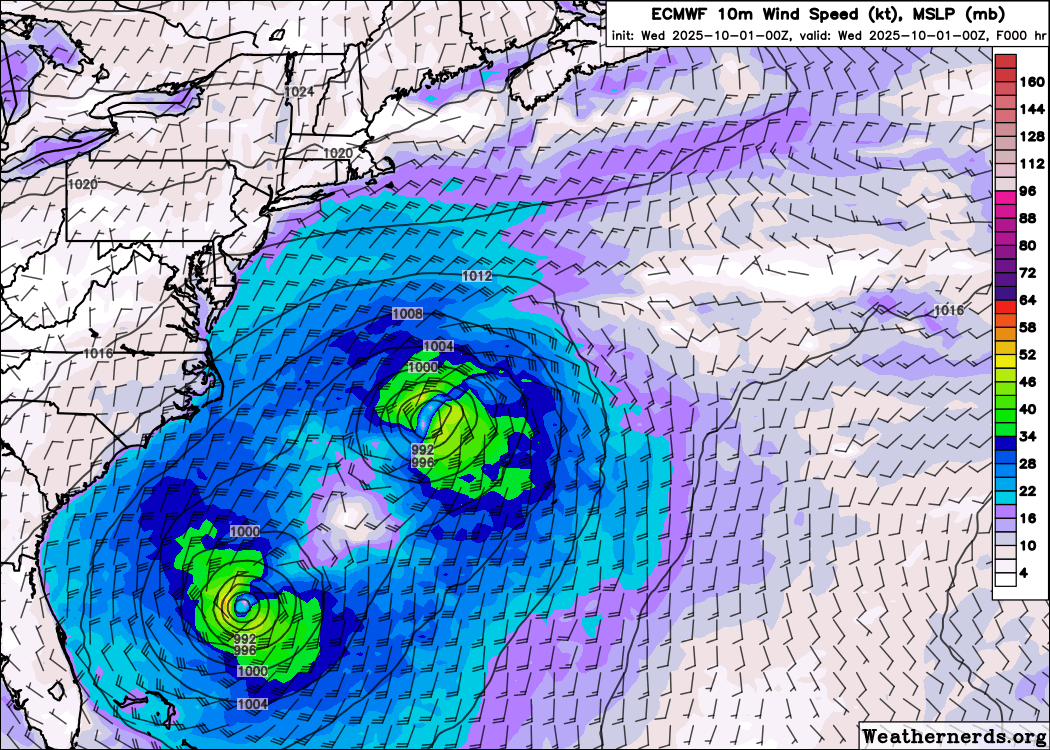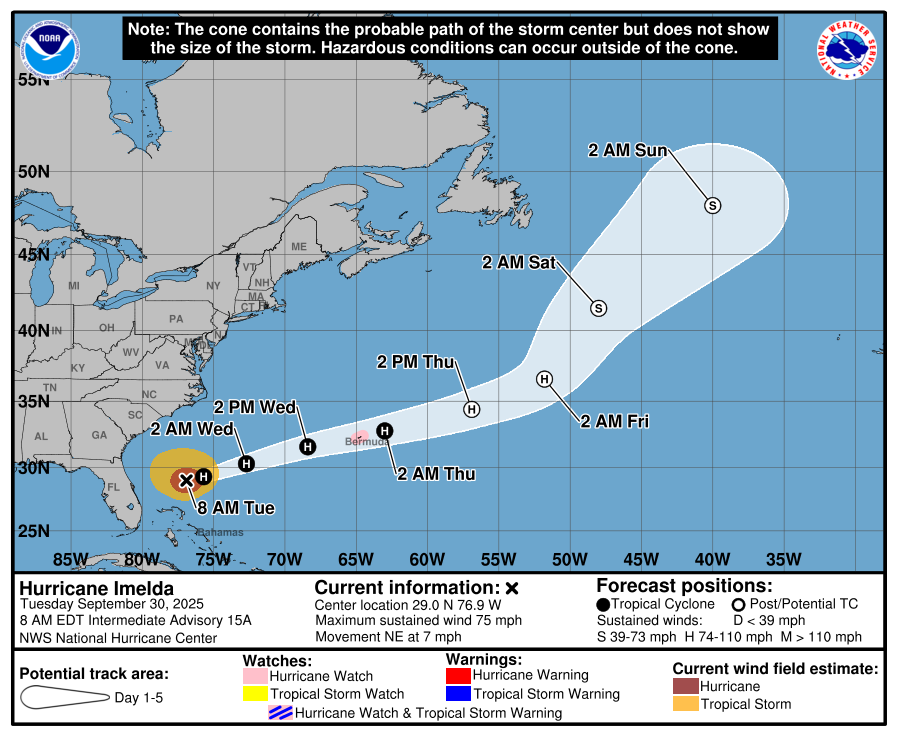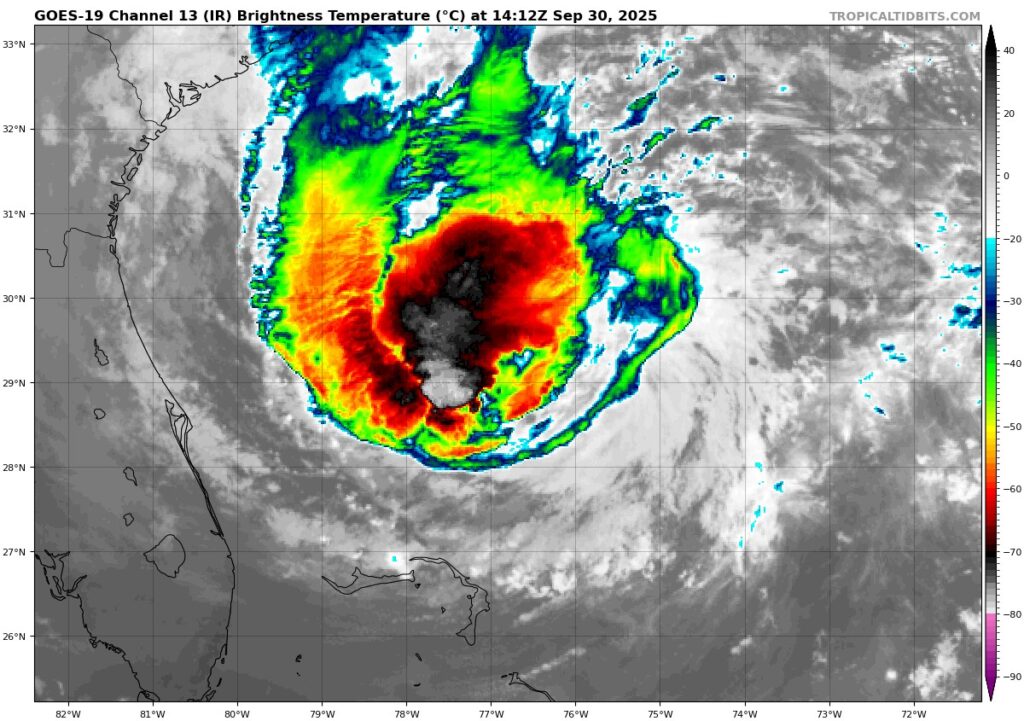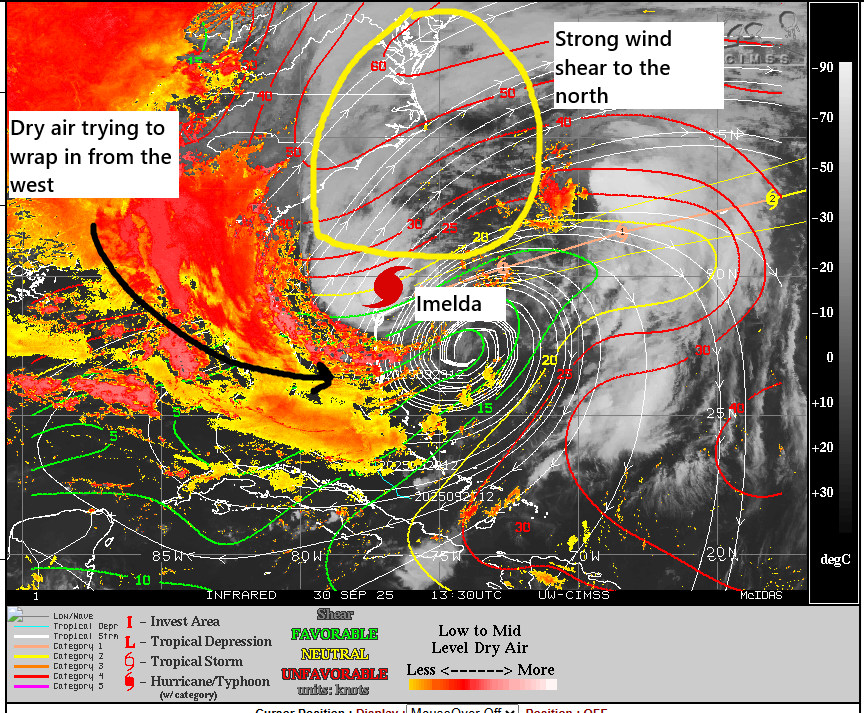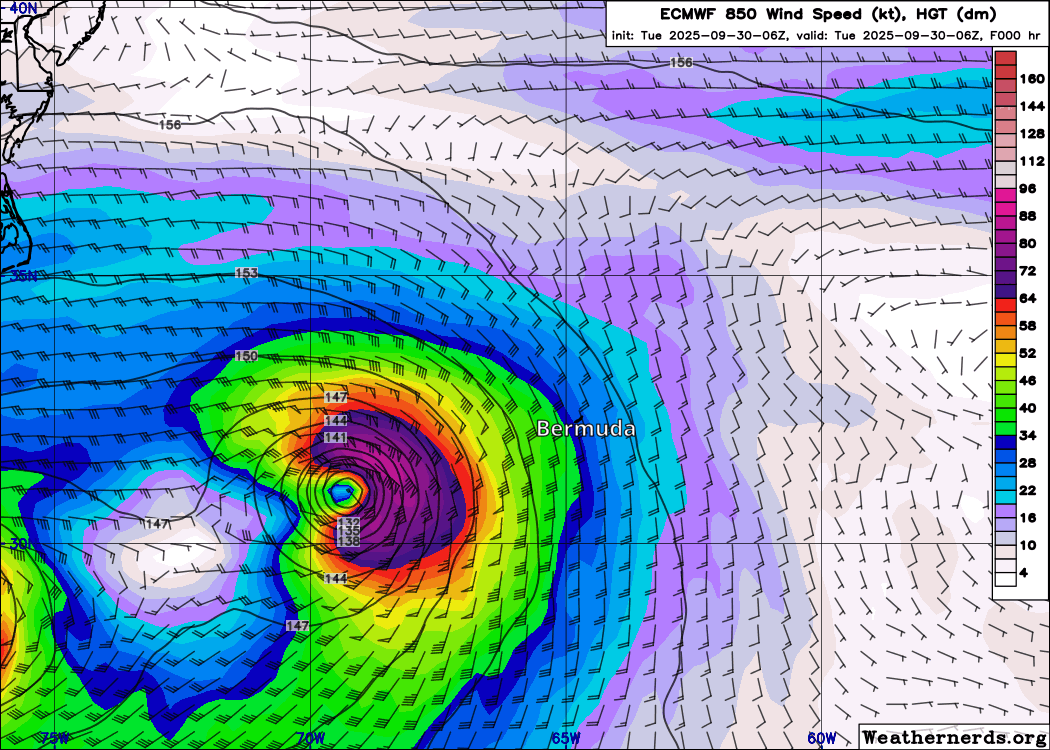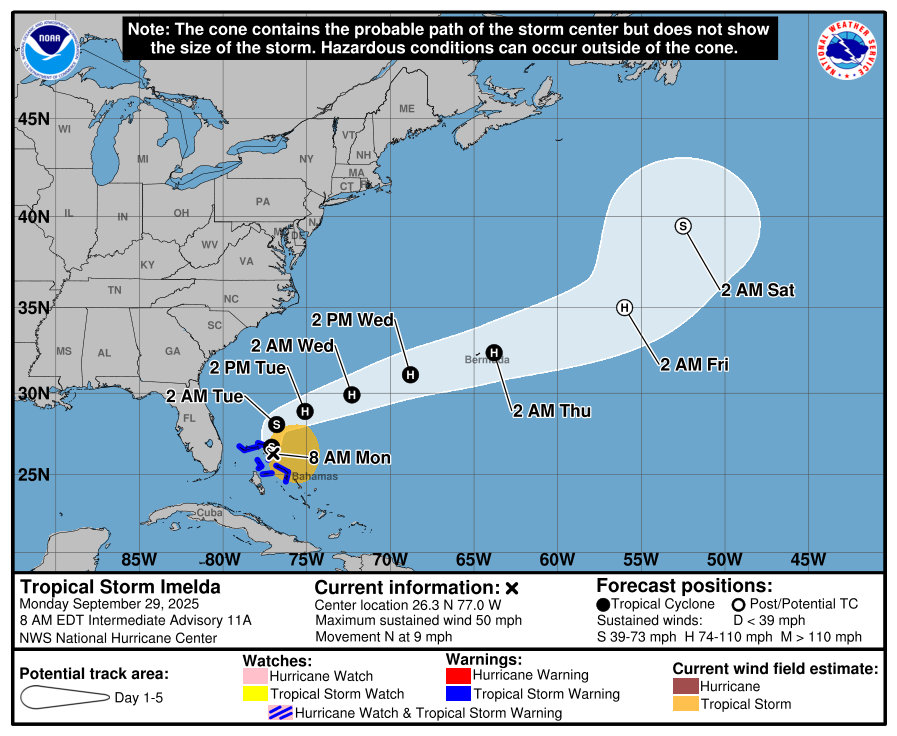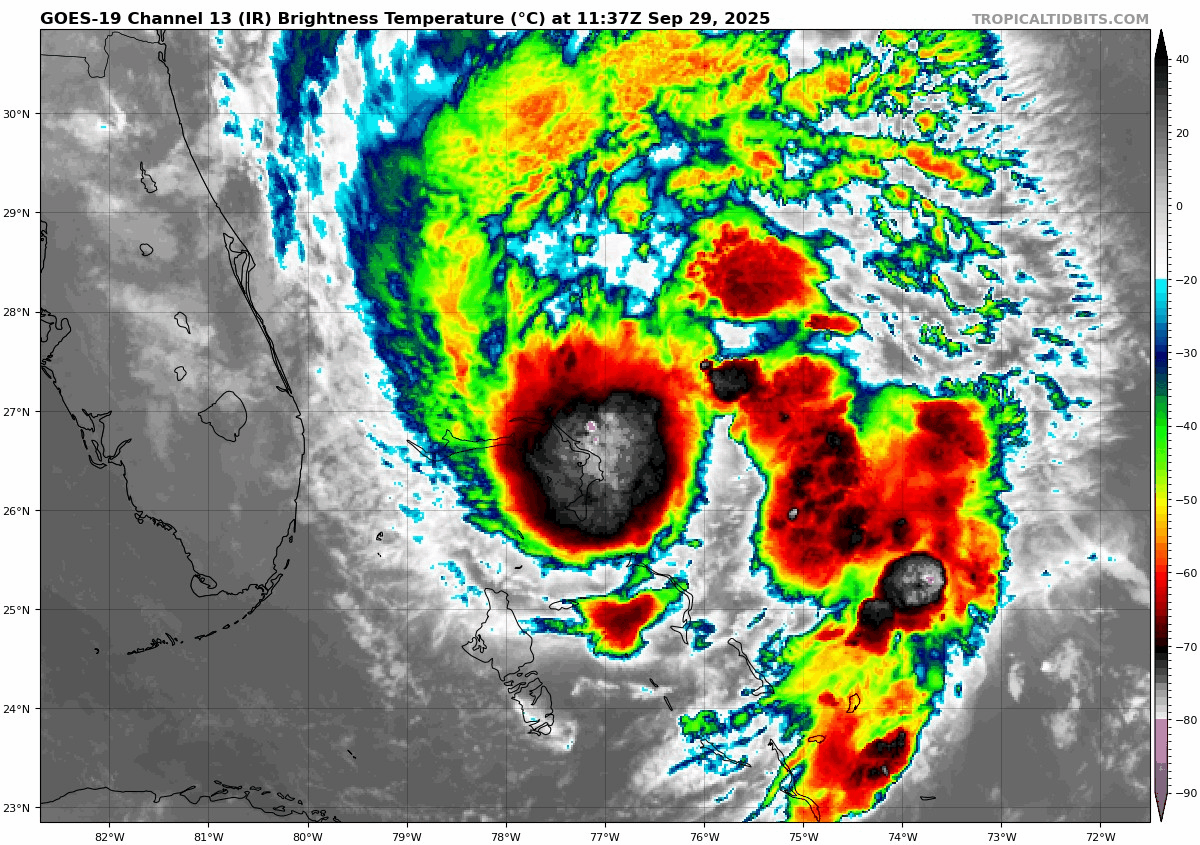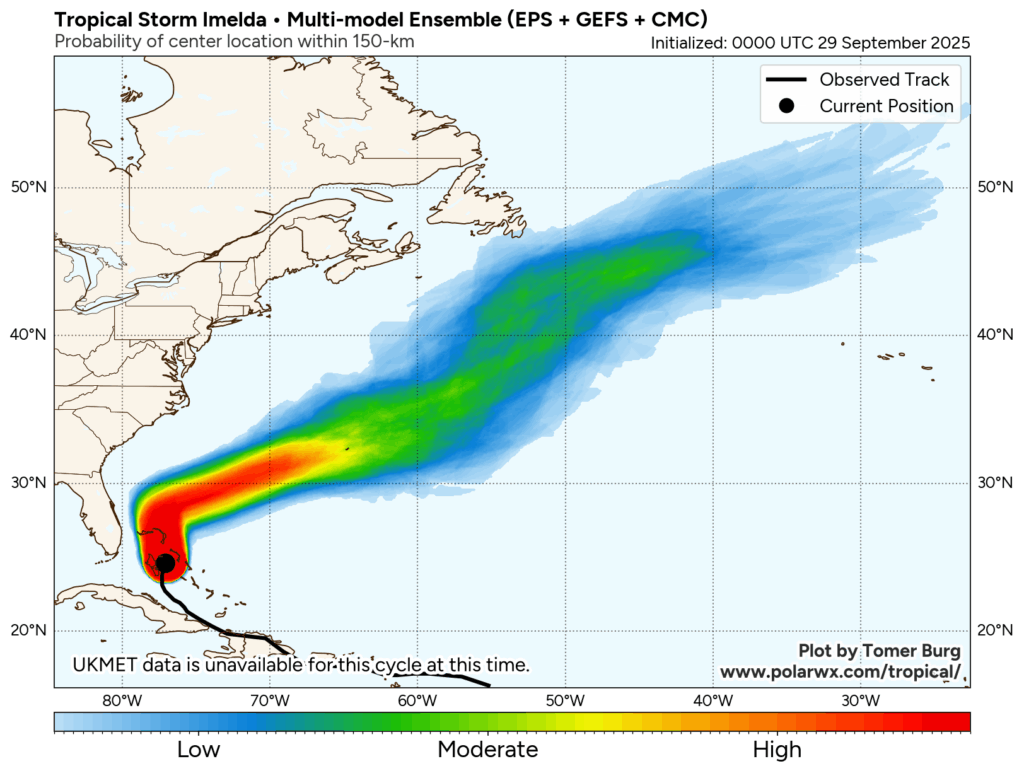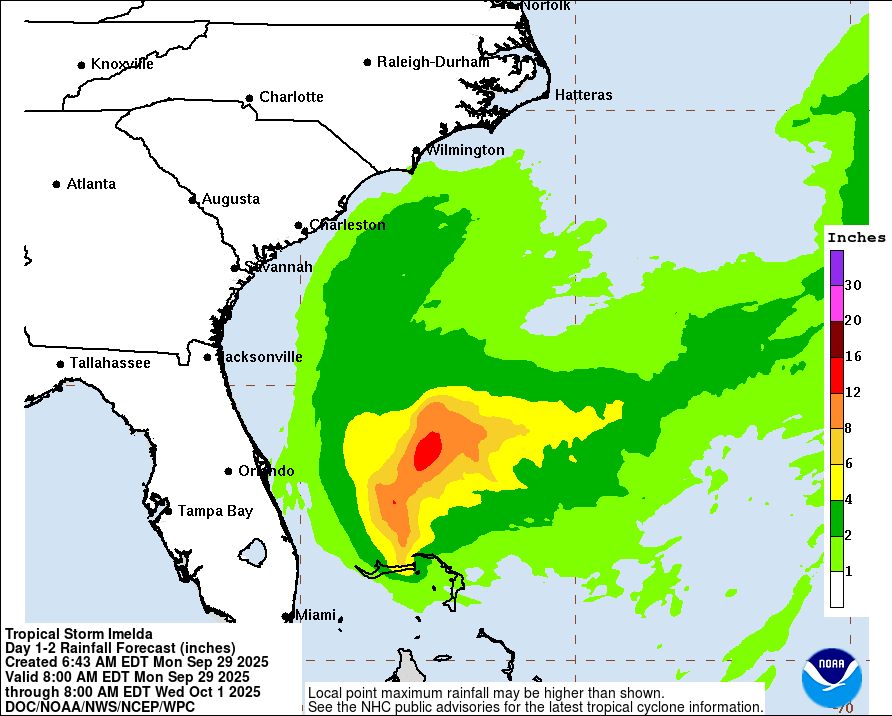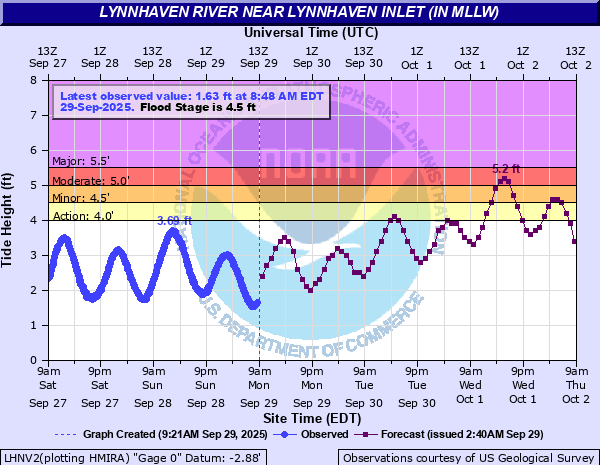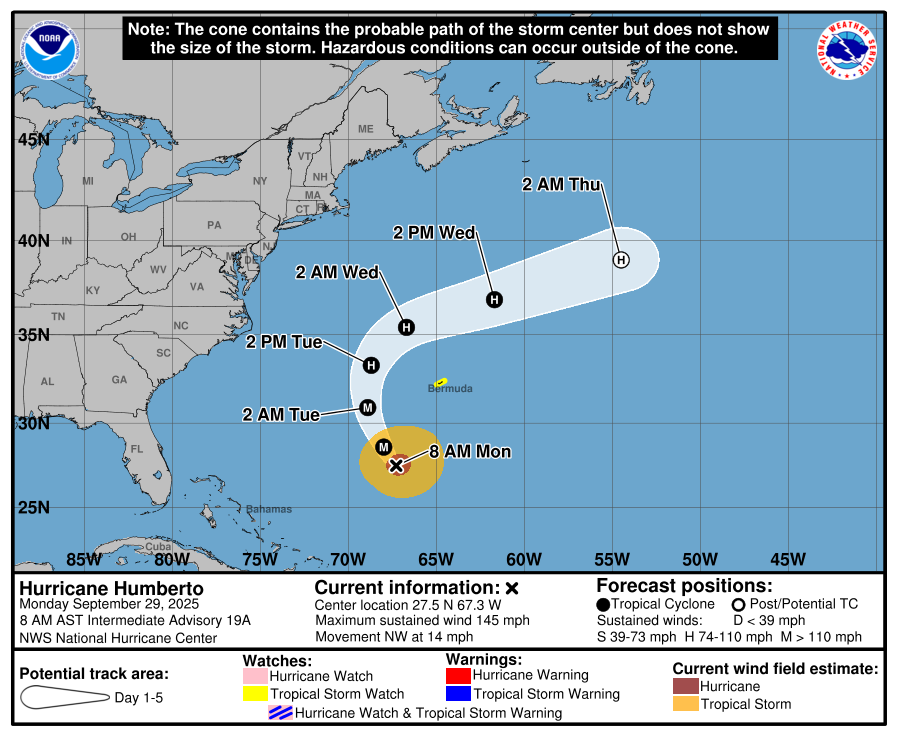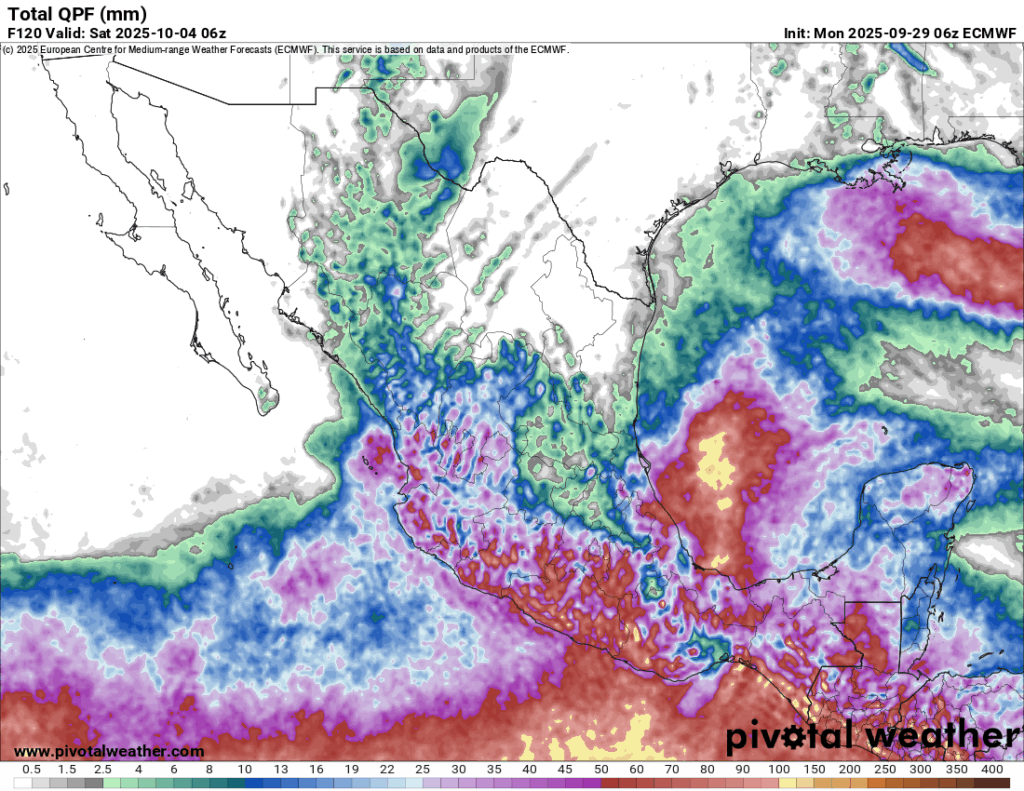In brief: Bermuda managed Imelda just fine based on reports today, and now Imelda heads out to sea. Storm Amy, which includes some influence from Humberto will hammer the Scottish Highlands with gusty winds this weekend. Two new areas of interest showed up today in the Atlantic, one near Florida (primarily a rainmaker) and the other in the central Atlantic (may be worth monitoring in the islands).
Hurricane/Post-Tropical Imelda
According to the Royal Gazette of Bermuda, the island managed to get through Imelda without a ton of trouble. No casualties and no serious damage were reported. “By all accounts, the resilience of our island and its people have withstood the test. Because that’s what we do.” Bermuda gets hit fairly often, so they’re generally well-prepared for storms like this, and it’s not surprising that even a fascinating, challenging storm like Imelda was taken in stride there.
Imelda will now become post-tropical and head out to sea, weakening below hurricane intensity tomorrow. Tropical Storm Warnings will likely be discontinued this afternoon on Bermuda.
Humberto’s remnants and Storm Amy in the UK
From here, Imelda will slowly follow Humberto out to sea, though at this point, it is not expected to produce a significant storm for Europe like Humberto’s remnants will help fuel with Storm Amy. An Amber Warning for wind is posted for northwestern portions of Scotland from Friday evening through Saturday morning (UK time).
In the UK, warnings are issued on a yellow-amber-red scale, with red being the highest impact risk. In this case, amber warnings indicate significant risk but not necessarily the highest risk. According to the Met Office, “Storm Amy will bring a spell of damaging winds, initially in western areas during Friday evening before gradually transferring northeastwards through the night and into early Saturday. During this period, wind gusts of 60-70 mph are likely fairly widely, and may exceed 95 mph in more exposed areas. This is likely to lead to travel and power disruption.”
You can see on the European model how a small corridor of purple tracks just north of Northern Ireland, through the Outer Hebrides and into the upper reaches (Highlands) of Scotland.
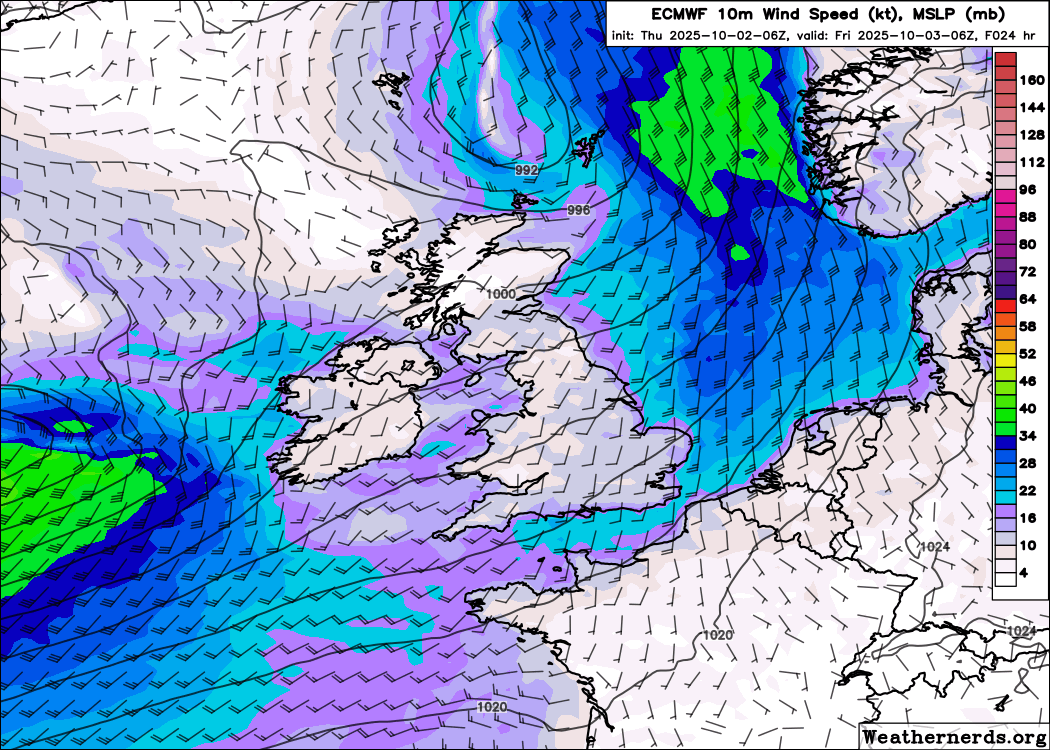
So this will certainly be an impactful storm in this region.
Just a quick note on naming storms in Europe. Storms are named in Ireland, the UK, or Netherlands when they’re expected to cause significant impacts, “medium” or “high.” The BBC has a good article explaining why, how, and what the name list is for the upcoming cold season. Wind is the main concern with these storms, but they also look at other impacts too. In Amy’s case, the amber warnings are only posted for wind.
Rest of the tropics
With Humberto and Imelda exiting the outlook, we replace them with two new participants today! Please welcome a 10 percent area near Florida and a 20 percent area in the open Atlantic.
Starting in the Atlantic, this area is showing a 20 percent chance of development next week, mainly east of the islands. We’re a long way out, however there is actually good model agreement on some kind of organization in the central Atlantic by midweek next week.
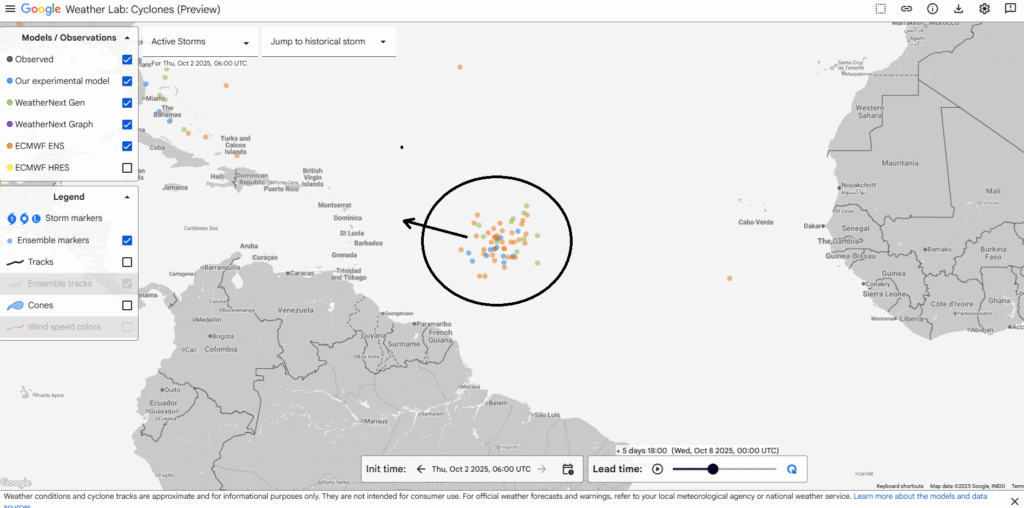
We have a long way to go with this one. Eventually, like most Atlantic activity this time of year, the system, should it develop will likely turn out to sea. Where that happens is TBD. So, for folks in the Caribbean islands, it’s a good idea to check back in on this in a couple days to see where things stand.
Closer to home, there is a low-end chance of development near Florida. Models are mostly unexcited by this area in terms of possible tropical development. However, there is a strong signal for locally heavy rainfall on the coast of Florida. In fact, the next week or so could see close to double digit rain totals on Florida’s east coast.
There will likely be some urban flooding concerns from time to time, especially between Fort Lauderdale and Daytona. The overall pattern would support a slow northwest drift to any low pressure that develops. This will also keep persistent onshore flow going in Florida. That leads to rip currents, rough surf, and generally hazardous marine conditions in Florida.
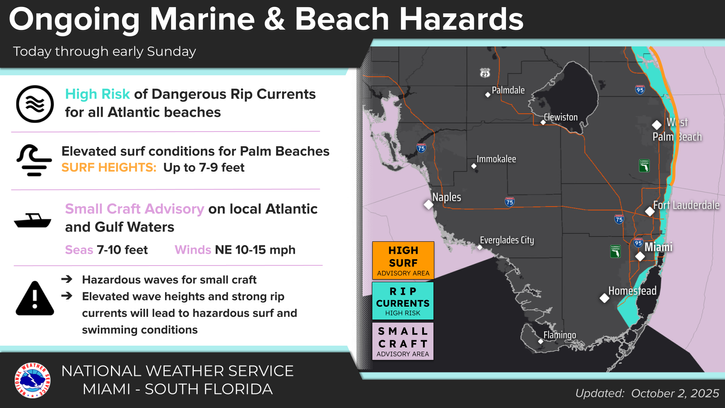
If you’re vacationing in Florida this weekend, just be advised to use caution if you venture into the water.
We’ll keep tabs on this one in the coming days to ensure nothing funky happens.
